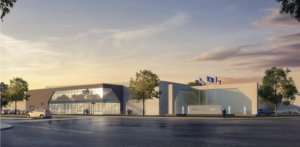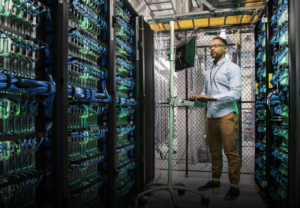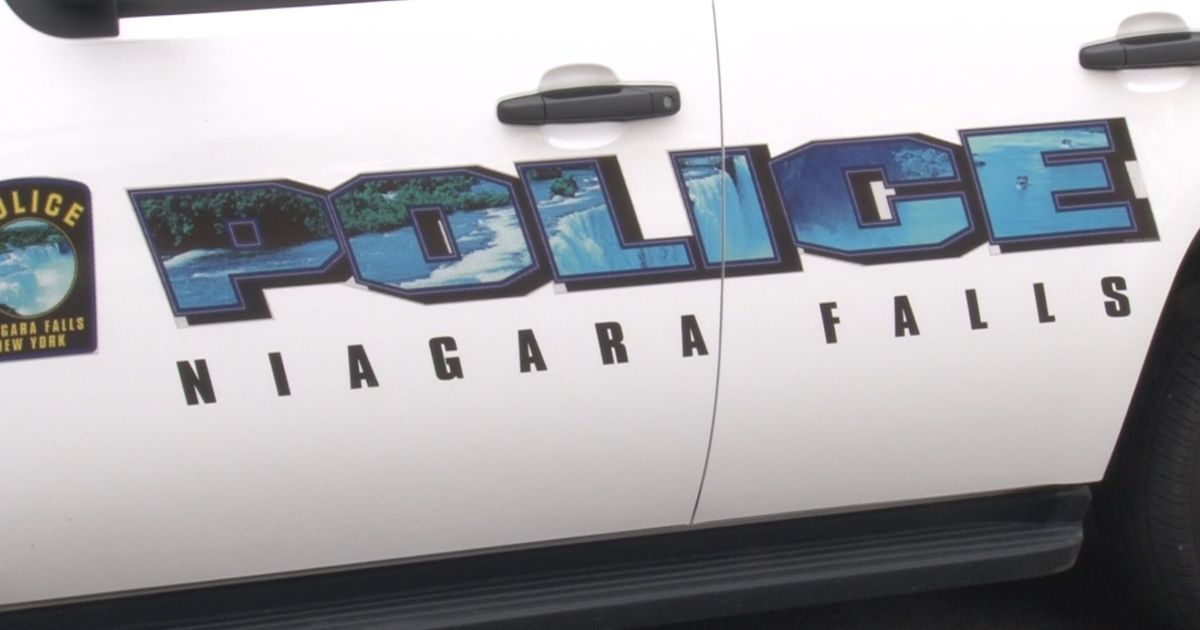The Niagara Digital Campus is an innovative, $1.48 billion technology and data center hub that will bring thousands of jobs and cutting-edge technological infrastructure to the City of Niagara Falls.
The joint project between Niagara Falls Redevelopment (NFR) and Urbacon—a Toronto-based developer of state-of-the-art data centers—is privately funded and will bring tremendous economic benefits to the community. During construction, the Niagara Digital Campus is projected to create more than 5,600 high-paying jobs with more than $250 million in wages, with economic spinoff benefits expected to top more than $810 million. Once operational, the Digital Campus is estimated to create more than 500 high-paying permanent jobs, with expected annual wages of nearly $29 million. Total economic benefit from the new facility is expected to exceed $250 million annually, with more than 1,700 permanent jobs created in support and ancillary businesses.
Data Center Demand Continues to Grow
Data According to a July 2023 Global Data Center Trends study by CBRE:
- Data Center vacancy is at a decade low across all major North American markets.
- Sourcing enough power is a top priority of data center operators across North America, Europe, Latin America and Asia-Pacific. Certain secondary markets with robust power supplies stand to attract more data center operators.
- Large corporations are finding it increasingly difficult to find enough data center capacity.
- The rapid growth of artificial intelligence—along with other modern technologies, such as streaming, gaming and self-driving cars—is expected to drive continued strong data center demand. This will spur innovations in data center design and technology as operators aim to deliver the capacity that meets the increased power density requirements of high-performance computing.
And according to a January 2023 McKinsey report: “The explosion in demand for data centers has attracted the attention of investors of all types—growth capital, buyout, real estate, and, increasingly, infrastructure investors… The United States accounts for roughly 40 percent of the global market.”
Recent Earnings Calls Bring Attention to the Trend
Recent earnings calls by tech giants Nvidia and Oracle show just how in-demand data centers are.
In November, Nvidia—which makes the chips which power much of the infrastructure of data centers—reported:
[T]here’s a new class of data centers… we call these new data center AI factories.
We’re seeing AI factories being built out everywhere in just about every country. And so, if you look at the way where we are in the expansion, the transition into this new computing approach, the first wave you saw with large language model start-ups, generative AI start-ups, and consumer Internet companies. And we’re in the process of ramping that. Meanwhile, that’s being ramped.
***
Enterprise software companies like Adobe and Dropbox, SAP, and ServiceNow are adding AI copilots and assistants to their platforms. And enterprises in the world’s largest industries are creating custom AIs to automate and boost productivity. The generative AI era is in full steam and has created the need for a new type of data center and AI factory, optimized for refining data and training and inference and generating AI. AI factory workloads are different and incremental to legacy data center workloads supporting IT tasks.[1]
AI factories run copilots and AI assistants, which are significant software TAM expansion and are driving significant new investment, expanding the $1 trillion traditional data center infrastructure installed base, empowering the AI industrial revolution.
And in December, Oracle Chairman Larry Ellison reported:
The demand for Oracle Cloud Infrastructure and generative AI is consistently increasing quarter after quarter… Oracle is in the process of expanding 66 of our existing cloud data centers and building 100 new cloud data centers.
We have to build 100 additional cloud data centers because there are billions of dollars more in contracted demand than we currently can supply. Cloud infrastructure demand is huge and growing at an unprecedented rate. In the next few weeks, we expect to sign a couple more billion-dollar Cloud Infrastructure contracts. Gartner recently named Oracle OCI as a leader in cloud platform and infrastructure services.
The demand for cloud infrastructure services and new Oracle Cloud data centers is broad-based, driven not only by generative AI customers but also by nation-states buying sovereign Oracle Cloud data centers, plus large banks, telecommunications companies, and industrial companies buying dedicated cloud data centers — dedicated Oracle Cloud data centers. And perhaps most interestingly, demand from other hyperscalers and other cloud service providers co-locating and connecting their clouds with Oracle Cloud data centers. Customers don’t want clouds to be walled gardens. In the next few months, we will turn on 20 new Oracle Cloud data centers co-located with and connected to Microsoft Azure as a part of our joint multi-cloud initiative.
These 20 new multi-cloud data centers will house over 2,000 full racks of Exadata Database Machines, designed to meet pent-up demand for the OracleCloud database.[2]
Niagara Falls is the Perfect Location for a Major Data Center
Dennis Elsenbeck, a consultant to the Niagara Digital Campus, is the head of the Energy and Sustainability practice at Phillips Lytle LLP Energy Consulting Services. His career in integrated climate, energy and infrastructure issues includes more than 30 years at National Grid.
Elsenbeck wrote in the Niagara Gazette in November:
Urbacon could build anywhere, of course. Yet they want to build in Niagara Falls. Why? Three reasons: Climate, Power, and Water.
Niagara Falls is in a cooler, northern climate, so it will cost less money to cool the facility than if it were, say, in Arizona or Nevada. Our very environment is leveraged to meet climate change objectives, since it minimizes use and cost associated with mechanical cooling. Moreover, the Niagara Digital Campus site has access to sufficient electrical capacity, as well as infrastructure that leads right up to the property. Indeed, NFR and Urbacon plan to build a new electrical substation, at their own expense, as part of the project. Given the developers will invest in their own electric system, capacity will not be compromised in the City.
And water? Once again, our environmental assets bring climate change solutions.
The result? Data centers in cooler climates, with access to power and water, will be at a premium—which bodes well for former “Rust Belt” communities throughout the northern United States.
Niagara Falls Risks Being Left Behind
Sadly, it has now been nearly three years since Urbacon first approached the City of Niagara Falls with its interest in developing the Niagara Digital Campus (the timeline is here). Everyone in the community should be concerned that the City of Niagara Falls is missing a rare opportunity to participate in the technological revolution in data storage and management taking place all around us.
NFR and Urbacon are ready, willing, and able to make the Niagara Digital Campus a reality. All we need is for the City of Niagara to work with us on the two-project solution that will bring high-tech jobs and economic opportunity to a local community sorely in need.
Let’s make the Niagara Digital Campus a reality.























